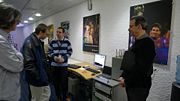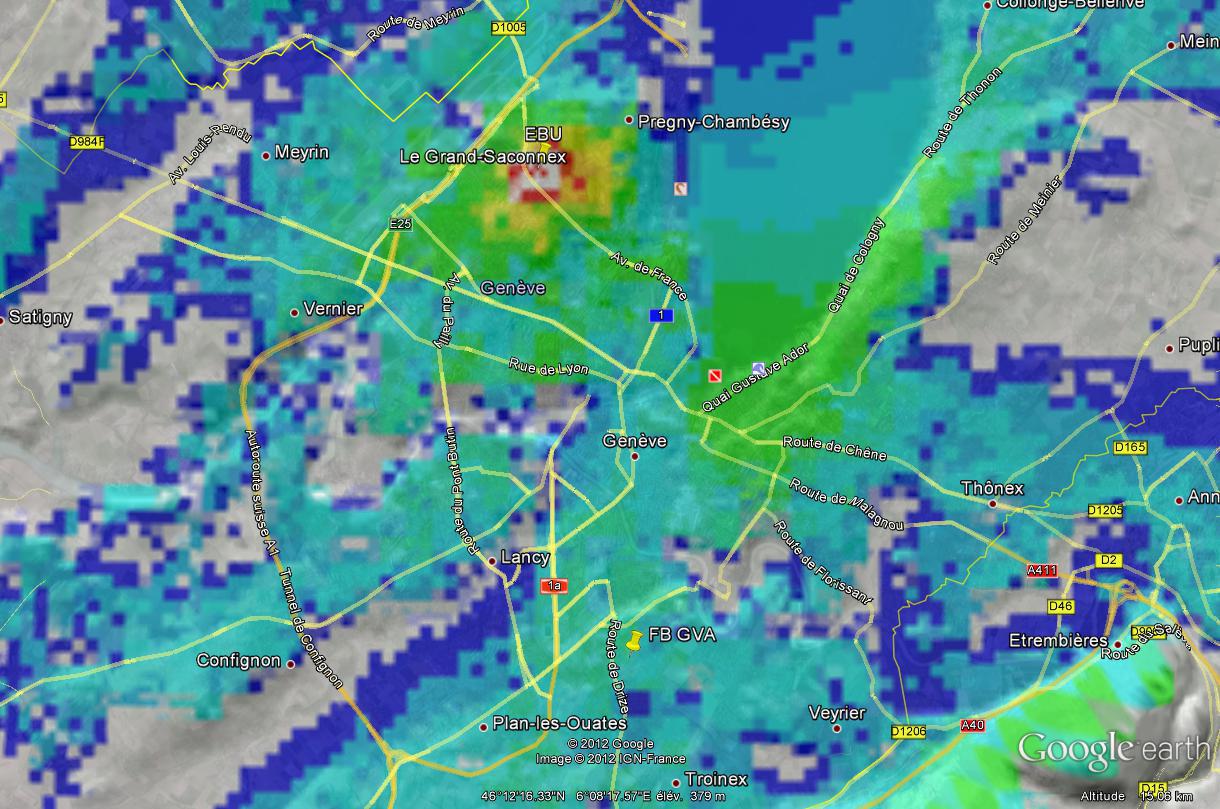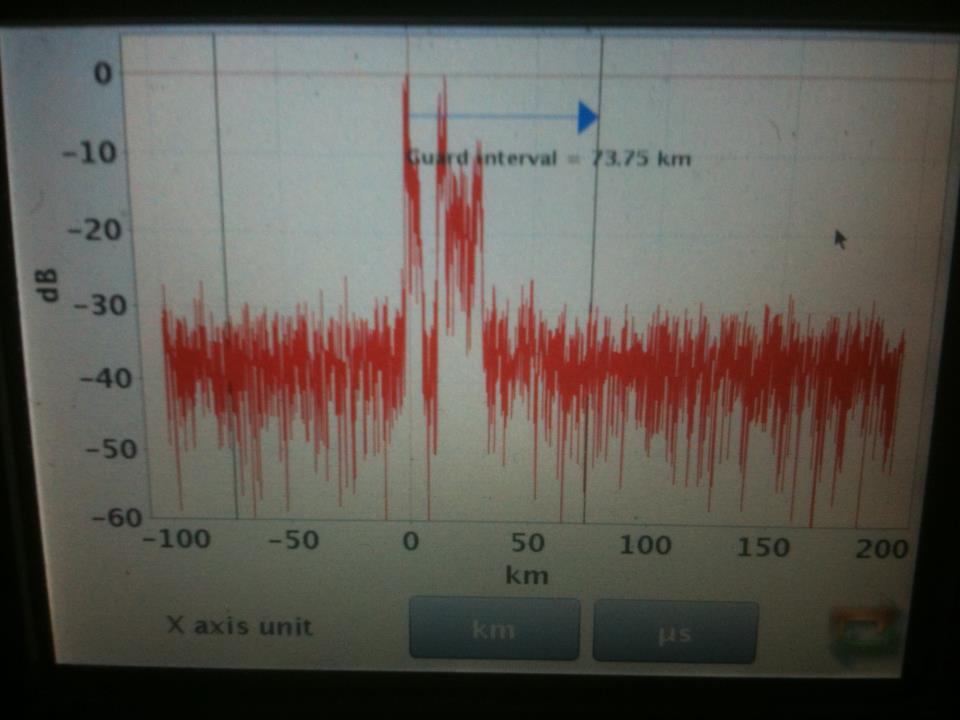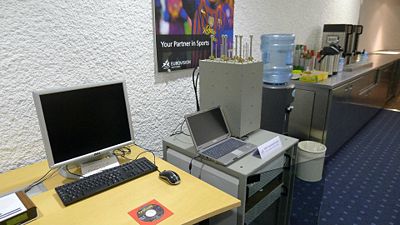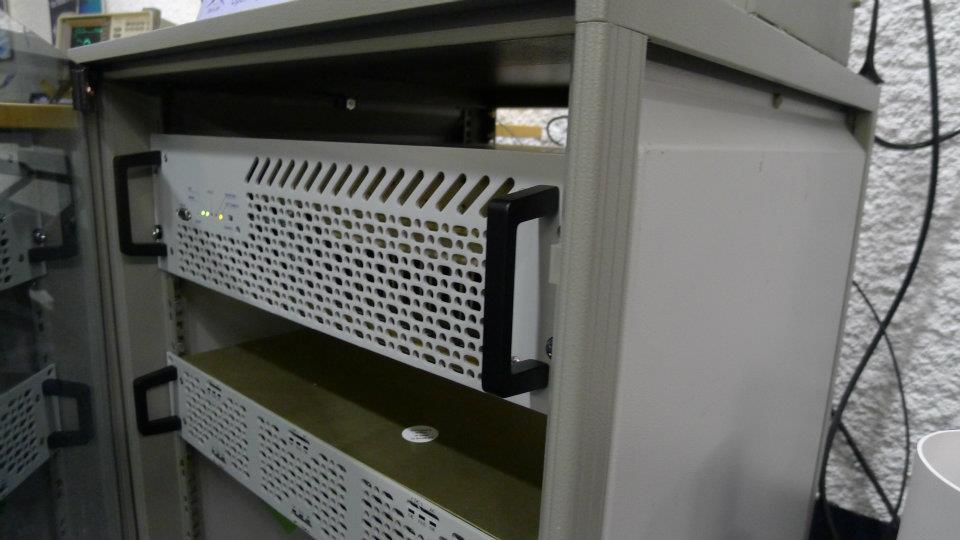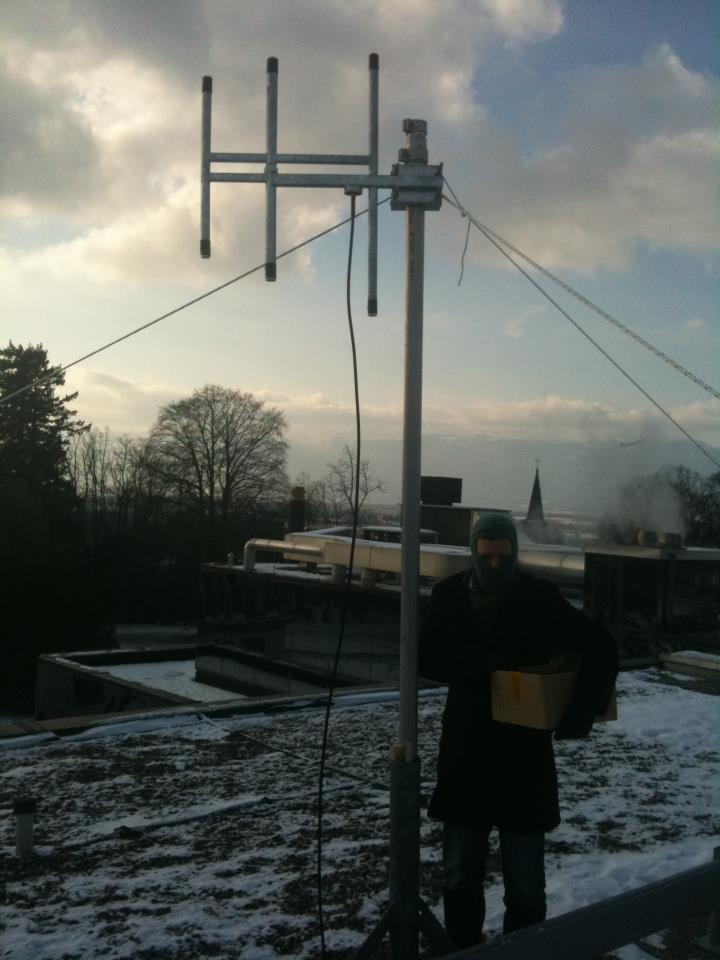Live DAB+ test transmission in Geneva during the EBU Radio Week 2012 with 100W ERP
Contents |
Explanation
During the EBU Digital Radio Week, a live DAB+ transmission using 100 Watts ERP has taken place.
The idea was to demonstrate a working setup using mmbTools coupled to a VHF power amplifier, mask filter and antenna. This kind of setup can be used by local or community radios to build affordable DAB+ transmission. The full setup cost is around 20'000 € and can broadcast up to 18 stations (or more if lower bitrates). The most expensive item is the 600W power amplifier. The antenna used has a gain of 5dB so the maximum radiated power of this kit is around 1.8 kWatts, that is enough to cover a medium/big city (depending on terrain topology and antenna location)
The coverage was patchy as the radiated power is limited and antenna location is far from ideal (roof from EBU, surrounded by buildings). However, the signal could be received in many places in Geneva county.
Content
Content on the multiplex was varying depending on tests. Most of the time it was:
| Program | Bitrate | SID | Program Type | Comment |
|---|---|---|---|---|
| Banane | DAB+ 88 | 4002 | Student Radio | |
| Openbroadcast/Radiobus | DAB+ 88 | 4003 | User generated/School radio | (Open Broadcast outage at the end) |
| Maxxima | DAB+ 88 | 4004 | Dance | |
| Backstage Radio | DAB+ 88 | 4005 | User Generated Radio | |
| Nashvillage | DAB+ 88 | 4006 | Country Music | SVG RadioVIS for this program |
| LeMixx | DAB+ 88 | 4007 | Funk&Groove | |
| Uzic | DAB+ 88 | 4008 | Techno Minimal | |
| Voxinox2 | DAB+ 88 | 4009 | Young Seniors | |
| Chat | DAB+ 64 | 4112 | File loop | James Cat purr |
The transmission is on channel 10A. Ensemble label is EBU/UER and EID 4FFF.
Some channel are with RadioDNS/RadioVIS hybrid radio slideshow service activated. Nashvillage is demonstrating RadioVIS SVG slideshow showing a small voting application for the next song (working on Frontier Silicon Milan module based prototype firmware). At the moment no DAB slideshow is made but it may be activated later in the trial.
Coverage estimation
Coverage estimation using Radio Mobile, a free software from Roger Coudé that implements Longley-Rice ITM model. Parameters have been set to:
- Broadcast, location probability 95%
- Transmitting antenna height: 10m
- Receiver height 1.5m
- Colours: deep blue = 45dbuV/m (reception limit) to red=100dBuV/m, Green is around 66-75dBuV/m.
Model uses terrain height but doesn't take into account buildings and reflections so it is a rough estimation. In our measurement campain, we have noticed lots of reflections on Salève mountain that contribute to the signal. Power in DAB cannot be compared to FM because in FM it is for one station and concentrated on 200kHz of bandwidth while in DAB it is on 1.7MHz of bandwidth and for a large number of programs. The power efficiency is still higher than for FM despite the fact that power amplifier has a much lower efficiency in digital (around 20%).
Measurement Campain
A measurement campain has been done thanks to a Audemat DMB Navigator measurement equipment lent by xxx. Deep blue correspond to situation when reception was really bad or not present. We can see some matching with coverage prediction. However in some situation where we can see that reception was good despite prediction. This is because we had contribution from reflection from the Salève mountain (on bottom right of the picture) that the prediction doesn't take into account. On the other hand we had bad reception despite good prediction, this is due to building surrounding the transmission antenna and also receiver. Taking into account building would be very costly (acquiring data, buying propagation model). This is not really needed if the transmission antenna is well located higher than buildings.
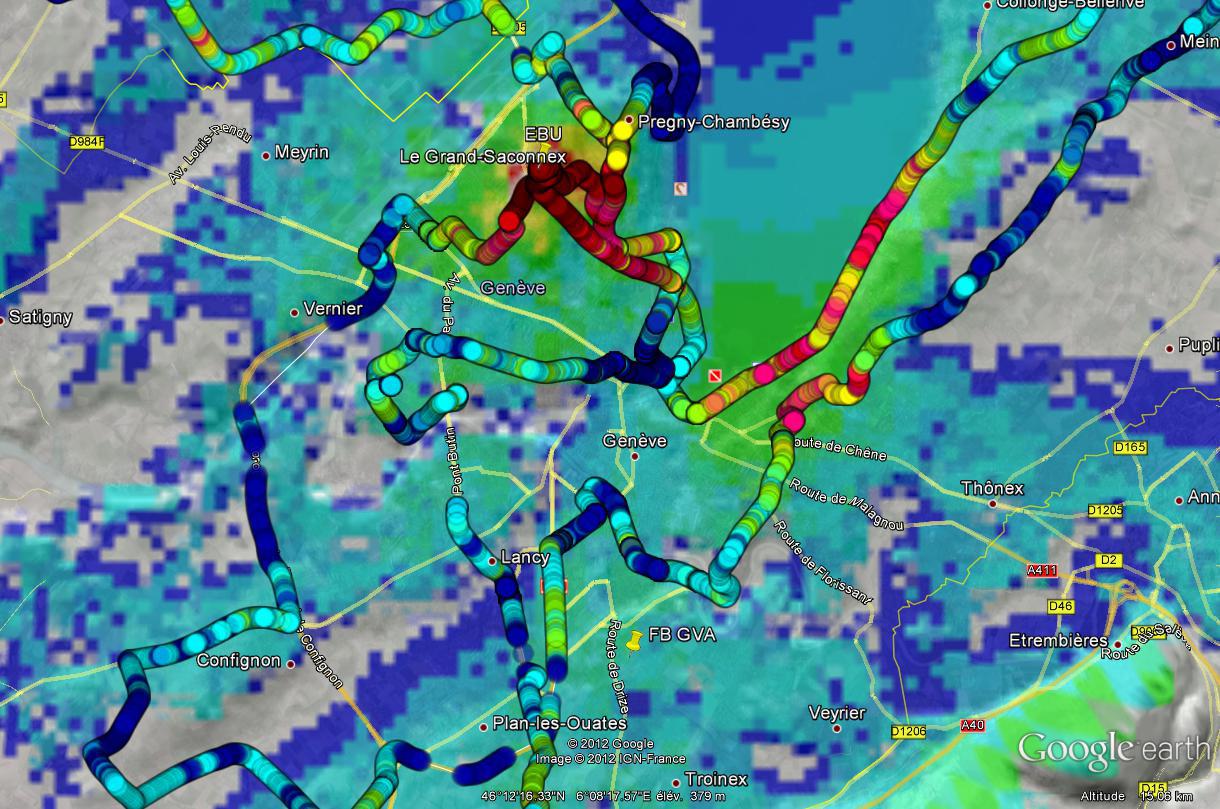
This equipment is capable of recording also the impulse response of the channel that is very useful to observe reflections of radio waves. However, we have noticed big differences between receivers, some are very good in adjusting their FFT windows to the channel considering multipath while some other have bad strategy and loose reception easily. In particular the worst case is when we have equal power direct path and reflections:
- Receivers using the maximum power path to set their FFT windows (worst strategy) cannot cope with such a situation when moving
- Receivers can cope with it when having better FFT window positioning like synchronising on the first path in the impulse response or computing the "gravity" center of the power for all paths (best).
- However this worst case may become unbearable when timing is almost the same or when deep cancellation happens (zero dB echo). In such cases, flat fading occur leading to complete cancellation of the signal.
Example of the impulse response measurement by DMB navigator during the measurement campain. Here we can see the direct path and the reflection from the Salève mountain about 10-15 km away. Both are almost with same power.
Pictures
More pictures on our Facebook page http://www.facebook.com/opendigitalradio
Contact
- Mathias Coinchon: coinchon at yahoo dot com
- Stanislas Roehrich
